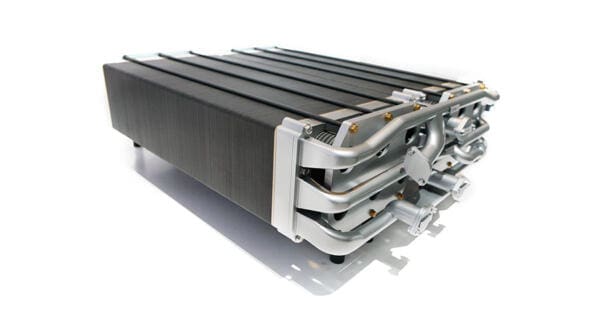
ALBIS: Starting Signal for Compounds in Fuel Cell Applications
ALBIS has developed plastic solutions for fuel cell applications. These are currently being validated in projects with well-known OEMs for use in electric vehicles, and include products from the established brands ALTECH®, ALFATER® XL TPV, TEDUR® L PPS and ALCOM®.
Battery-powered cars are currently being introduced to the market on a large scale, such as the VW I.D, AUDI e-tron, BMW i3, Opel Ampera-E and Mercedes EQC models.
There is no doubt that CO2 emissions can be reduced while driving with these vehicles, provided the energy comes from renewable sources. However, this technology poses a number of challenges that need to be addressed: The challenges are the procurement of resources, the maximum range per load and the associated duration of loading times.
Ian Mills, member of the ALBIS Management board and head of the Compounding business: “Hybrid solutions which combine battery and fuel cell are a promising solution here.”
The operation of fuel cell systems requires the use of numerous materials, including metals, plastics and sealing materials. These are used both for the fuel cell core itself, the so-called “stack”, and in the hydrogen, oxygen and air supply as well as in the cooling circuit. It is also used in components such as pumps, valves, compressors, pipes and connectors.

Pollutants, such as volatile components or ions, can contribute to the degradation of the fuel cell through emissions and thus to the reduction of its service life and performance, e.g. by changing the surfaces of the “bipolar plates”. These volatile components can migrate from the materials used in the individual assemblies of the fuel cell.
“However, the production of a fuel cell system from completely emission-free components is almost impossible due to a large number of individual parts and attachments,” explains Thies Wrobel, Business Development Manager Automotive. “Therefore, the materials used must be carefully examined for emissions.”
Equally important is that these qualified materials are produced with consistent quality, i.e. reproducible, with the same raw materials and in a clean production environment.
Against this background and in cooperation with OEMs, ALBIS has developed materials according to their criteria. These were then included in the basic tests for cooling systems and air supply.
These included polypropylene compounds from the ALTECH® PP portfolio with 20%, 40% and 50% glass fibres, PPS compounds from the TEDUR® L portfolio with 30% and 40% glass fibres + 15% PTFE (e.g. for plain bearing applications) as well as ALFATER® TPV, a peroxidically cross-linked thermoplastic vulcanizate with comparable properties to elastomer/rubber in Shore A 60 & 70 hardness (for sealing applications).
In the future, further compounds will be tested in ALBIS’s laboratory on a specially installed test set-up.
For more information about compounds in fuel cell applications, contact Thies Wrobel, Business Development Manager Automotive via email.





